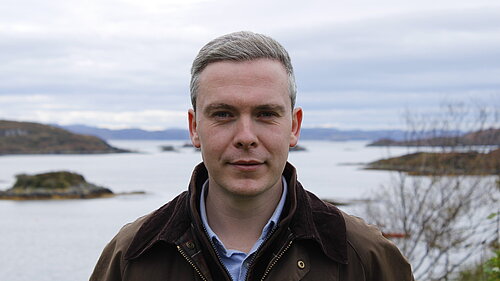Over 500 sewage spills across the Far North but the “tip of the iceberg”, Lib Dem warns

The Scottish Liberal Democrat candidate for the Far North, David Green, is calling for a new Clean Water Act as he fears research released by his party revealing over 500 sewage spills across the Far North in 2024 is but the “tip of the iceberg”.
David Green, the Scottish Liberal Democrat for Caithness, Sutherland, and Ross, said it “stinks” that beauty spots across the Highlands “are blighted by disgusting sewage dumping” and warned the Scottish Government must “clean up its act.”
According to data revealed through freedom of information by the Scottish Liberal Democrats, across Caithness, Sutherland and Ross there were 522 sewage spills in 2024 - up from 442 the year previous - for a duration of almost 2473 hours.
Across the Far North there are only four overflows with annual monitoring data – by Lochcarron, Balintore, Edderton, and Tain – although none of these sites are monitored for volume.
In addition to these spills, the Scottish Liberal Democrats investigation into sewage dumping revealed there have been 51 complaints, made exclusively to Scotland’s Environmental Protection Agency (SEPA), dating back to 2022.
Examples of complaints made across the Far North include untreated sewage discharged into the Cromarty Firth near the Storehouse by Evanton, sewage blown into Smoo Cave and across Dunnet Beach, a burst pipe discharging sewage into the River Thurso, and sewage runoff near the Golspie Wildcat Bike Trails.
While the latest Scotland wide data show sewage was dumped 24,398 times in 2024, experts believe the problem is likely to be far worse. Unlike in England, only a small fraction of sewage overflow points in Scotland has full annual monitoring data.
The Scottish Liberal Democrats plan for a Clean Water Act that would see Scotland’s Victorian sewage network updated, every sewage dump monitored and published with binding targets for their reduction, a blue flag system for Scotland’s rivers, and a complete ban on the release of sewage in protected areas such as bathing waters.
David Green, the Scottish Liberal Democrat for Caithness, Sutherland, and Ross, said:
"It utterly stinks that beauty spots across the Highlands are being blighted by disgusting sewage dumping.
“These complaints, alongside the scale of overspill events, is a slap in the face to so many across our communities who work tirelessly to protect our local environment, both for locals and visitors alike.
“But given there are little to no consequences for dumping sewage in our rivers, lochs and beaches or indeed proper monitoring of local sites for volume, what we know is but the tip of the iceberg. I fear the situation is much worse.
"It's time the Scottish Government cleaned up its act. Scottish Liberal Democrats would introduce a Clean Water Act that would bring our sewage network into the 21st century, clamp down on dumping and get to the bottom of this disgusting practice."
ENDS
Notes to editors:
Please find attached the breakdown of complaints about sewage dumping and the descriptions given when the complaint was made.
Experts:
The Marine Conservation Society (MCS) raised alarms about the minimal monitoring of sewage overflows in Scotland in a 2023 report. Their analysis revealed sewage was discharged into seas around Scotland for more than 113,000 hours last year – a fraction of the true amount as only about 3.4% of Scotland’s storm overflows are currently monitored, compared to nearly all in Wales and 91% in England.
The Environmental Standards Scotland (ESS) has criticised the outdated and vague regulations governing sewage overflows, recommending enhanced data collection, improved monitoring by Scottish Water and the Scottish Environment Protection Agency (SEPA), and the establishment of clear rules regarding overflow exceptions.
Surfers Against Sewage (SAS) reported that untreated human and animal waste is being discharged into Scottish waters approximately every 90 seconds. This estimate is based on data indicating around 24,000 discharges last year from just 7% of the sewage network, suggesting the actual number could exceed 364,000.